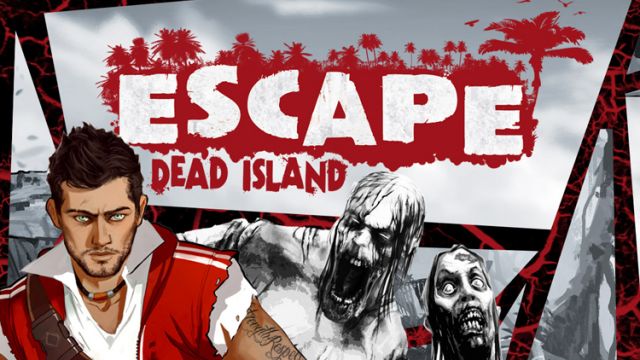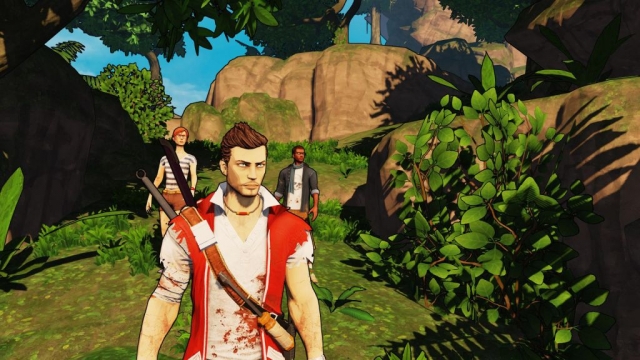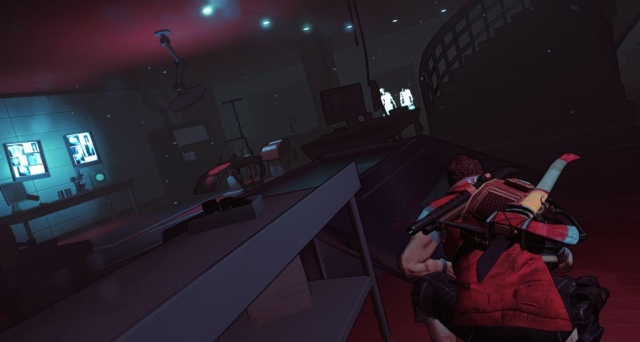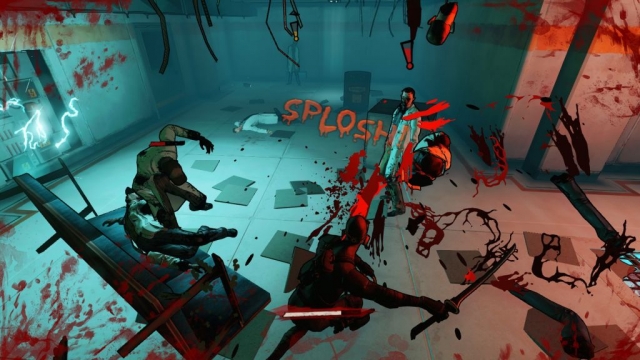Escape Dead Island

Imagine that the original Dead Island was not a 2011 video game, but was a summer blockbuster from some point in the 2000s. In that alternate universe, Escape Dead Island is the tie-in game from Activision or THQ or a handful of other license farms from the period.
It’s got all the ingredients of a mid-2000s shovelware licensed game: cel-shaded graphics, half-considered mechanics, janky physics, and blatant misuse of existing characters. You don’t see that kind of thing much anymore, given the cost of development on modern platforms, and it almost makes me nostalgic.
Early on, I was kindly disposed towards Escape, because while it was never exactly good, it could’ve been. It was trying. There was the germ of a decent game in here, where you get to explore a tropical island teeming with zombies, but in less of an all-out action mode than Dead Island. There were doors I couldn’t open yet and areas that told me I needed a grappling hook. Every nook and cranny seemed to hold a collectible. The lead character, Cliff Cabo, looks like he came in first in a contest to look as much like a fratboy douchebag as possible, but he doesn’t act like one, and the writing is more clever than it has any right to be. Like the other Dead Island games, it was flawed but often somewhat campy.
Then I reached the end, but we’ll get to that.
Escape is set six months after the events on the island of Banoi, where the original Dead Island is set. Since then, there’s been a media blackout surrounding Banoi and all the nearby islands, and all anyone knows is that there was a breakout of some unspecified disease. Cliff is the son of Tom Cabo, a multi-millionaire media mogul, and they don’t get along. After Tom gives Cliff’s sister a job at his company that was supposed to go to Cliff, Cliff sets out with two friends to impress his father by finding out what really happened on Banoi.
Their first stop is the nearby island of Narapela, the home of the headquarters of Geopharm, the corporation that was at least partially responsible for the outbreak on Banoi. The island seems deserted, but shortly after they get off their boat, it starts to sink. Cliff gets back aboard to try and fix it, and is promptly knocked unconscious by the sail’s boom. When he wakes up, he and his friends are marooned on an island that, as it turns out, is otherwise populated entirely by zombies. Whoops.
The important thing in the previous paragraphs is Cliff’s head injury. Escape uses it as an excuse to change up its gameplay on a regular basis, as Cliff is constantly hallucinating throughout much the game. This isn’t as well thought-out as it could be–Cliff somehow keeps getting equipment and ammunition from areas that are then conclusively demonstrated to have been dream sequences–but it provides the level designers with an excuse to add new challenges or surreal episodes to what would otherwise be a fairly low-key zombie apocalypse. Sometimes this means a basement passageway suddenly turns into a subway tunnel, complete with an oncoming train; other times, the viewpoint shifts or enemies turn out to be figments of your imagination.
Escape is a stealth game at heart, as Cliff is incredibly fragile throughout most of the game. Even one zombie can kill you if you’re unlucky, and anything more advanced than a standard shambler can be a serious problem. You’re encouraged to take out enemies with a surprise screwdriver to the ear canal whenever possible, because melee combat’s dangerous and your guns are nearly useless. You spend a lot of time lurking behind objects waiting for zombies to forget you were there, so you can sneak up and stab them in the back of the head.
So far, Escape is mediocre and occasionally frustrating, but it didn’t completely fall apart for me until the last level, at which point it goes totally off the rails. The stealth mechanics are nearly abandoned in favor of a series of room after room of zombie boss rushes, you end up in a hallucinatory dream realm, the main plot isn’t resolved in any conclusive way, and the ending has to be seen to be hated with the enthusiasm it deserves.
I don’t expect future Dead Island games will follow up on anything introduced in Escape Dead Island, such as Xian Mei’s appearance (which would seem to suggest things about Dead Island: Riptide‘s cliffhanger ending, but in the end, does not), and there’s no real reason to. It’s a thoroughly wasted opportunity, and whatever good will I had towards it was gone for good by the time I’d beaten it. I really can’t recommend this game, and for someone as obsessed with horror and zombies as I am, that’s really saying something.
Reviewed By: Thomas Wilde
Publisher: Deep Silver
Rating: 50%
——————————————————————————–
This review is based on a digital copy of Escape Dead Island for the PC provided by Deep Silver.
 Game Over Online
Game Over Online








